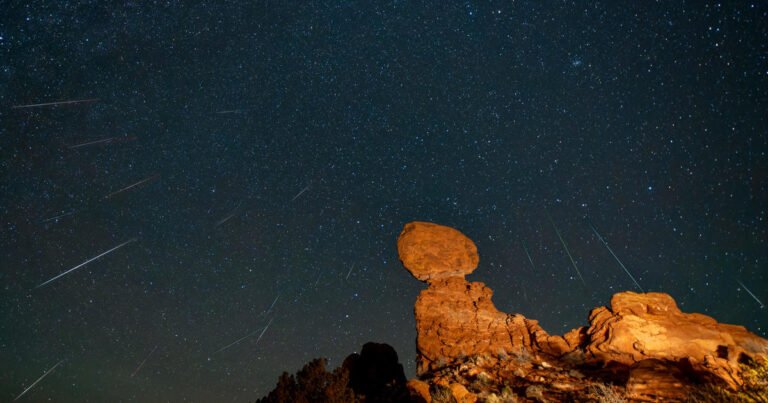
The Geminid meteor shower peak is more than a week away, but this year it might be a good idea to keep an eye out early, according to NASA.
The shower will peak from Friday Dec. 13 into early Saturday Dec. 14 — when the moon is nearly full, according to NASA. Illumination from the moon could make spotting the cosmic show a challenge during the peak, but bright meteors can be spotted the week before the peak.
Here’s what you should know about the Geminids meteor shower, including how to watch:
Where you can see the Geminids
Meteors from the Geminids will be visible throughout the sky and across the globe, according to NASA. They’re best viewed in an area far away from city and street lights.
Viewers — who should prepare for frigid temperatures — should lie flat on their backs with their feet facing south. Give your eyes a half hour to adjust to the dark.
The shower usually starts around 9 or 10 p.m. local time, with the meteors best viewed at night or in the pre-dawn hours.
EarthSky, an astronomy website published by experts in the field, suggests finding a way to block out the moon when watching for the Geminids.
“So with moonlit skies in 2024, you might only catch the brightest meteors,” according to EarthSky. “Luckily, many of the Geminids are bright meteors. Try blocking out the moon when watching for meteors.”
What are the Geminids?
Most meteor showers originate from comets, but the Geminids come from 3200 Phaethon, an asteroid. The Geminids first appeared in the mid-1800s. At the time, there were 10 to 20 meteors an hour, but the shower has grown bigger and meteors are now visible at a rate of 120 meteors an hour under perfect conditions.
While most meteors appear to be colorless or white, NASA scientists say the Geminids are bright, fast and usually yellow in color. They streak through the sky at a speed of 22 miles per second.
Meteors are space rocks that enter Earth’s atmosphere and heat up as they fall toward Earth, according to NASA. The streak of light is actually glowing, hot air.